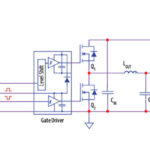Researchers at The Hong Kong Polytechnic University (PolyU) say they have developed a highly flexible, high-energy lithium battery for wearable electronics with a myriad of applications.
 PolyU’s novel lightweight Textile Lithium Battery demonstrates an energy density of more than 450 Wh/L and flexibility — with a bending radius of less than 1 mm and foldability of over 1,000 cycles with marginal capacity degradation. In comparison, the existing bendable lithium battery can only reach a bending radius of about 25 mm and demonstrates less than a 200 Wh/L energy density. The Textile Lithium Battery, of less than 0.5 mm thick, also charges and discharges quickly and exhibits long cycle life comparable with conventional lithium batteries.
PolyU’s novel lightweight Textile Lithium Battery demonstrates an energy density of more than 450 Wh/L and flexibility — with a bending radius of less than 1 mm and foldability of over 1,000 cycles with marginal capacity degradation. In comparison, the existing bendable lithium battery can only reach a bending radius of about 25 mm and demonstrates less than a 200 Wh/L energy density. The Textile Lithium Battery, of less than 0.5 mm thick, also charges and discharges quickly and exhibits long cycle life comparable with conventional lithium batteries.
Professor ZHENG Zijian, who leads the ITC research team, said, “Wearable technology has been named as the next global big market opportunity after smartphones. As all wearable electronics will require wearable energy supply, our novel technology offers a promising solution to a wide array of next-generation applications.”
Over the past decade, scientists have put a great deal of effort into developing bendable lithium batteries, often by using metal foils as current collectors. However, it is only with the emergence of PolyU’s Textile Lithium Battery that the bottlenecks over energy density, flexibility, mechanical robustness and cycling stability have been addressed.
PolyU patented a novel technology of Polymer-Assisted Metal Deposition (PAMD) where highly conductive metal, copper (Cu) and nickel (Ni) are uniformly and conformally deposited onto pre-treated fabrics. Such fabricated metallic fabrics, featuring low sheet resistance and large surface area, serve as current collectors in the battery. After adding active materials to act as cathodes and anodes, the metallic fabrics, together with a separator and electrolyte, are assembled into the Textile Lithium Battery.
PolyU says that laboratory tests conducted by the ITC team have shown the new battery exhibits extremely high mechanical stability, durability and safety under deformation. When the battery is repeatedly folded in half, twisted at different angles or freely crumpled, its voltage window remained unchanged. Bending tests showed that the battery can bend over 1,000 times with marginal capacity degradation. Safety tests conducted by continuous hammering, trimming with scissors and penetrating with nail proved the battery can stably provide power output for the electronic components with no risk of catching fire or burst, PolyU says.
The findings were published in Nature Communications:- Chang et al. Flexible and stable high-energy lithium-sulfur full batteries with only 100% oversized lithium. Nature Communications, 2018, 9(1): 4480.






Leave a Reply